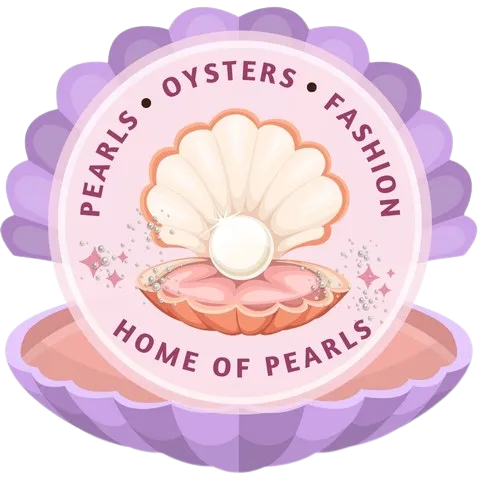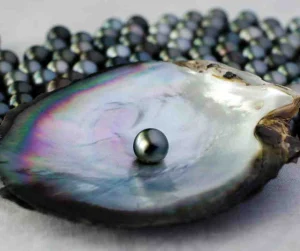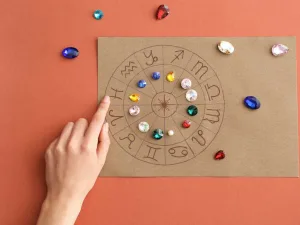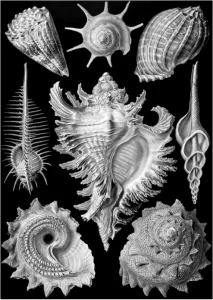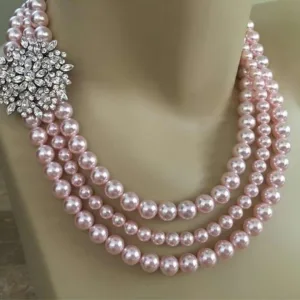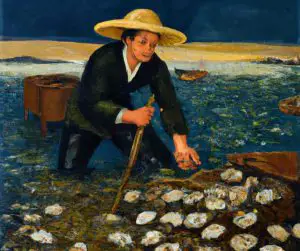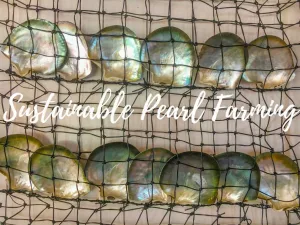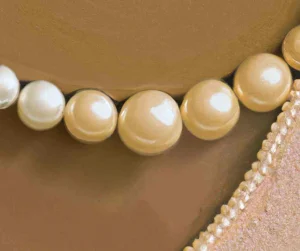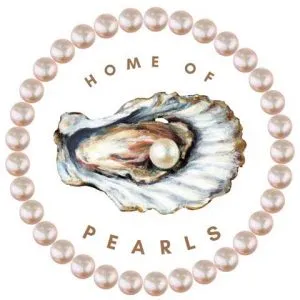Pearls have been a symbol of beauty and elegance for centuries. Natural pearls are formed in nature inside the shells of oysters or mollusks, and they add an extra layer of sophistication to any wardrobe. From classic pearl necklaces to modern earrings featuring natural pearls, there’s no denying their timeless appeal. But what exactly are natural pearls?
How do you identify them? And how should they be cared for so that your jewelry remains beautiful through the years? We’ll explore all these topics (and more!) as we take a closer look at this stunning gemstone – starting with what makes it unique: its origin from within nature itself!
Table of Contents
- What are Natural Pearls?
- Types of Natural Pearls
- How to Identify Natural Pearls
- Care for Natural Pearls
- Fashion with Natural Pearls
- FAQs in Relation to Natural Pearls
- Conclusion
What are Natural Pearls?
Natural pearls are gems that form naturally in the wild, inside of oysters and other mollusks. They are created when an irritant, such as a grain of sand or a parasite, enters the mollusk’s shell and the mollusk secretes layers of nacre to protect itself from the irritant. Over time, these layers build up to form a pearl. Natural pearls come in various shapes and sizes depending on where they were formed. The most common shape is round but natural pearls can also be oval, baroque (irregularly shaped), semi-baroque (semi-rounded) or button-shaped.
The color of natural pearls varies greatly depending on their origin; some may be white with pinkish overtones while others may have more yellowish hues or even black tones. Some rare varieties can even display shades of green or blue. Natural pearls often have unique markings like spots or swirls which make them truly one-of-a-kind pieces for jewelry makers and collectors alike.
Types of Natural Pearls: There are two main types of natural pearls – saltwater and freshwater – each with its own distinct characteristics that set it apart from the other type. Saltwater natural pearls are typically found in oceans around the world while freshwater ones tend to grow in rivers, lakes and ponds primarily located in China and Japan but also elsewhere around Asia Pacific region including Australia’s Northern Territory coastlines near Darwin city too.
Saltwater natural pearls usually feature higher luster than their freshwater counterparts due to having thicker nacre coating whereas freshwaters generally boast brighter colors because they contain more pigment particles within their shells compared to saltwaters which tend towards pastel shades instead. Both types however share similar qualities such as being very durable since they are made up entirely of organic material, so you don’t need to worry about damaging your precious gemstones if handled properly.
How To Identify Natural Pearls: It is not always easy to identify whether a pearl is real or not without proper training so it is important for buyers/collectors who wish purchase genuine items know how distinguish between authentic & fake specimens before making any purchases. One way tell if something has been artificially produced versus naturally occurring would look at surface quality – real ones will have smooth surfaces free any blemishes whereas fakes will show signs wear & tear due imperfections caused by manufacturing process used create them . Additionally looking closely at size & shape could help determine authenticity too since all cultured products follow specific patterns based off original design template used during production phase whereas no two genuine articles ever exactly same .
Care For Natural Pearls: Caring for your precious gems requires special attention as they must be treated delicately order maintain their beauty over time. This means avoiding contact with harsh chemicals like detergents , perfumes etc., storing away from direct sunlight exposure heat sources prevent discoloration fading , keeping dry after wearing ensure longevity life span . Lastly regular cleaning using soft cloth dampened warm water should done regularly keep dirt grime buildup minimum levels possible .
When it comes to fashioning beautiful looks featuring these lovely stones, there is really no limit to the imagination and creativity involved here either. From classic necklaces, bracelets, earrings and rings through modern day pendants, brooches and hair accessories – the possibilities are endless when styling yourself using the timeless elegance provided by nature herself for us to enjoy every single day of our lives.
Natural pearls are a unique and beautiful natural phenomenon that have been used in fashion for centuries. They come in many shapes, sizes, and colors, making them the perfect addition to any outfit. Now let’s take a look at the different types of natural pearls available today.
Key Takeaway: Natural pearls are organic gems formed inside of oysters and other mollusks. They come in various shapes, sizes, and colors and can have unique markings that make them one-of-a-kind.
Types of Natural Pearls
Freshwater Pearls: Freshwater pearls are the most common type of natural pearl and come from mussels found in rivers, lakes, and ponds. They can range in size from 2mm to 12mm and come in a variety of shapes including round, oval, baroque (irregularly shaped), button-shaped, drop-shaped, semi-baroque or semi-round.
These pearls also come in many colors such as white, pinkish white, yellowish white or cream colored with overtones of rose or silver. The quality of freshwater pearls is determined by their luster (shininess), surface texture (smoothness) and color uniformity.
Saltwater pearls are typically more expensive than freshwater varieties due to their rarity and higher quality. Saltwater pearls usually range between 3mm – 15mm, but can be larger depending on the species of oyster they came from; they also have a greater variety of shapes compared to freshwater types including rounder circles as well as symmetrical teardrops and buttons.
In terms of color saltwater varieties often display richer hues such as golds blues greens purples pinks silvers etc with some having iridescent overtones which makes them particularly desirable for jewelry pieces. As far as quality goes these gems are judged based on their luster, surface texture, shape, size, nacre thickness matching set etc., making it possible for buyers to find exactly what they’re looking for when shopping for salt water pearl jewelry items.
Natural pearls come in a variety of shapes, sizes, and colors. Knowing the different types of natural pearls can help you make an informed decision when selecting the perfect pearl for your jewelry collection. Now let’s explore how to identify natural pearls.
How to Identify Natural Pearls
Natural pearls are unique gems that come from oysters, mussels, and other mollusks. They can be identified by their irregularities on the surface which make them stand out compared to cultured or imitation pearls. Natural pearls will often have bumps, ridges, or other imperfections that give them character and beauty.
One way to identify natural pearls is by looking at their luster. Natural pearls tend to have a higher luster than those made in a lab because they reflect more light off of their surfaces due to the unevenness of the nacre layers. The luster should also be even across all parts of the pearl rather than having spots where it is duller or brighter in certain areas.
Another method for identifying natural pearls is by examining their shape and size. Natural pearls are usually not perfectly round like cultured ones, but instead may be oval-shaped with an irregular surface texture due to years spent inside an oyster’s shell forming naturally over time without any human intervention. Additionally, natural pearl sizes vary greatly depending on how long they were inside the mollusk before being harvested; whereas cultured ones tend to be uniform in size since they’re grown under controlled conditions with specific parameters set beforehand such as size and color desired for each batch produced.
The final way you can tell if a pearl is real or not is by checking its weight compared to similar sized pieces of glass beads which are used as imitations when making jewelry items like necklaces and earrings. Real Pearls will feel heavier because they contain calcium carbonate while glass beads do not, so this difference can help you determine whether your gemstone is genuine or fake quickly without needing any special tools or equipment; just using your hands.
Natural pearls can be identified by their unique luster and iridescence, so it is important to take proper care of them in order to maintain their beauty. In the next section, we will discuss how to properly care for natural pearls.
Key Takeaway: Real pearls can be identified by their luster, shape, size and weight compared to glass beads. Natural pearls have a higher luster than cultured ones, an irregular surface texture, varying sizes and are heavier than glass beads.
Care for Natural Pearls
When it comes to caring for natural pearls, the most important thing is to handle them with care. Natural pearls are delicate and can easily become scratched or damaged if not stored properly. It is best to store them in a soft pouch or jewelry box away from other pieces of jewelry that could potentially scratch them.
It is also important to keep natural pearls away from harsh chemicals such as perfumes, hairspray, and lotions which can discolor the pearl over time. Additionally, extreme temperatures should be avoided as this can cause cracking or discoloration of the pearl’s surface.
In order to clean your natural pearls you should use a damp cloth with warm water and mild soap only – never use any abrasive cleaners on your precious gems. After cleaning, pat dry with a soft cloth before storing back in its pouch or box. If you have multiple strands of pearls they should be restrung every few years so that they don’t wear out too quickly due to friction between each strand while being worn.
If wearing your natural pearl necklace often then make sure you put it on after applying makeup and perfume so that these products do not come into contact with the gemstones directly. Also avoid wearing them when swimming as chlorine found in pools can damage their luster over time if exposed frequently enough. Finally remember not to leave your pearls lying around where pets may get at them – cats especially love playing with shiny objects.
Natural Pearls are beautiful gems perfect for adding an elegant touch to any outfit, but they must be cared for properly in order to maintain their beauty and luster for many years. With proper care, your natural pearls can remain a timeless addition to your wardrobe.
Proper care for natural pearls is essential in preserving their beauty and luster. With the right knowledge, you can enjoy your natural pearls for years to come. Now let’s explore how to incorporate these beautiful gems into fashion.
Key Takeaway: Natural pearls should be handled with care and stored in a soft pouch or jewelry box. Clean them using mild soap and warm water, avoid harsh chemicals, extreme temperatures, chlorine and pet contact.
Fashion with Natural Pearls
Natural pearls are a timeless accessory that never goes out of style. From classic pearl necklaces to more modern pieces, they add an elegant touch to any outfit. Natural pearls come in many shapes and sizes, from round and baroque to keshi and blister pearls. They can also be found in various colors like white, cream, pink, gold or black. Depending on the size and color of the pearl you choose, you can create a unique look for yourself.
Pearl necklaces are one of the most popular ways to wear natural pearls. Whether it’s a single strand or multiple strands layered together with other jewelry pieces like diamonds or gemstones – there is no wrong way to accessorize with natural pearls. For those who prefer something more subtle yet still stylish – try wearing a single strand necklace featuring small freshwater cultured pearls for an understated but sophisticated look.
Earrings are another great way to incorporate natural pearls into your wardrobe. Choose between stud earrings featuring large South Sea cultured pearls or dangling earrings made up of smaller Akoya cultured ones for an eye-catching effect. You could even opt for mismatched earrings if you want something truly unique that will make heads turn wherever you go.
For those looking for something less traditional – why not try wearing natural pearl bracelets? Bracelets featuring different sized Tahitian cultured Pearls strung together on silk thread give off an effortless bohemian vibe while chunky cuff bracelets adorned with large golden South Sea Pearls make quite the statement piece.
No matter how you decide to wear them, natural pearls always bring sophistication and elegance into any ensemble. Don’t be afraid to experiment with different styles until you find what works best for your personal taste.
Key Takeaway: Natural pearls are a timeless and elegant accessory that come in various shapes, sizes and colors. Wear them as necklaces, earrings or bracelets for a unique look that will make heads turn. Experiment with different styles until you find what works best for your personal taste.
FAQs in Relation to Natural Pearls
Do natural pearls still exist?
Yes, natural pearls still exist. They are formed when an irritant such as a grain of sand or a parasite enters the mantle tissue of certain mollusks and is coated with nacre over time.
Natural pearls can be found in oysters and mussels living in both saltwater and freshwater environments around the world.
Cultured pearls, which are produced by humans, have become more popular due to their affordability compared to natural pearls. However, many people still prefer the beauty of naturally occurring gems that come from nature itself.
How much are natural pearls worth?
The value of natural pearls depends on a variety of factors, including size, shape, color, and luster. Generally speaking, the larger the pearl is, and the more perfect its shape is, the higher its worth will be. Additionally, pearls with intense colors, such as pink or blue, tend to be more valuable than those with lighter hues, like white or cream.
Lastly, pearls that have a high level of luster are also considered more desirable and thus can fetch higher prices. All these factors combined determine how much a natural pearl is worth; however, it’s not uncommon for rare specimens to sell for thousands or even tens of thousands of dollars.
How can you tell if pearls are natural?
The best way to tell if pearls are natural is by examining them closely. Look for irregularities in the shape, size, and color of the pearl. Natural pearls will have an uneven surface with bumps or ridges on it, while cultured pearls will be more uniform in appearance.
Additionally, natural pearls tend to be more irregularly shaped than cultured ones and can come in a variety of colors depending on the type of mollusk they come from. Lastly, check for any signs that suggest the pearl has been drilled or altered in any way, as this could indicate that it is not a natural pearl.
Which pearls are natural?
Natural pearls are formed when an irritant, such as a parasite or piece of sand, enters the mantle tissue of a mollusk. The mollusk then secretes nacre around the irritant to form a pearl. Natural pearls can be found in freshwater and saltwater environments and come in many shapes, sizes, colors, and luster qualities.
Cultured pearls are created by inserting a nucleus into the mollusk’s body which is then covered with layers of nacre over time. They have become increasingly popular due to their affordability compared to natural pearls while still providing beautiful pieces for fashion accessories.
Conclusion
Natural pearls are an exquisite and timeless addition to any wardrobe. They can be used in a variety of ways, from classic jewelry pieces to more modern designs. Natural pearls come in different shapes, sizes, and colors, so you’re sure to find something that suits your style perfectly.
